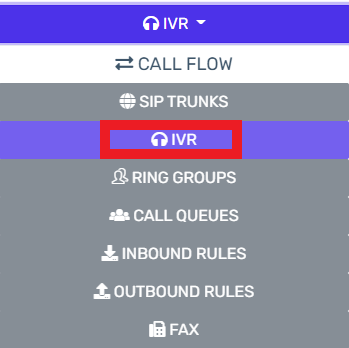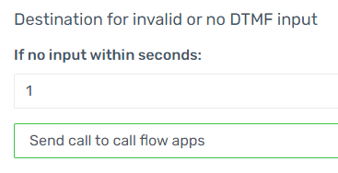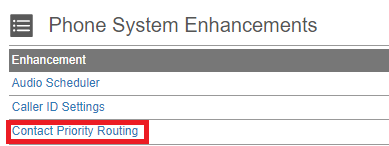1Stream Engage Required
1Stream Engage Required
This feature is available for only 1Stream Engage licensed users and higher plans. If you don't have this and would like this feature to be available, please reach out to your Sales Representative to upgrade user licensing.
Feature Activation Notice
Once you have setup everything for priority call routing in 1stream, a ticket will need to be submitted to request that the feature be activated so that the phone system part of the setup can be completed. You can reach out to our support team in the top right of this page.
What is Priority Call Routing?
Priority Call Routing allows for your call flow to be customized based on a client or account within your CRM. As long as the phone number is listed in the client's account or the contact, it will route the call as you dictate.
Changing Priority Warning
When removing clients from being included in the priority call routing feature, please bear in mind that the Contact cache only updates every hour, so changes may be applied up to one hour later.
Setup Variation Notice
The instructions below reflect setup based on having the IVR go directly to the function. However, the setup can be be applied similarly through a Key Press in the IVR.
Setting up Priority Call Routing in the Phone System
- Log into the bvoip Phone System.
- Go to the Call Flow > IVR section.

- Edit or Create the IVR that should be routing the Priority calls.
- Scroll down to the Destination for invalid or no DTMF input section.

- In the If No Input Within Seconds field, add the number of second before routing the call to the Priority Calls.
- In the drop-down directly beneath, select the Send Call to Call Flow Apps option. The Destination drop-down will then appear.

- In the Destination drop-down, select the priorityrouting.Main option.

- Click the Save button.
Setting up Priority Call Routing in 1stream
- Log into the 1stream Admin Portal.
- Go to the Administration > Manage Organization menu in the top right.

- Scroll down to the Experience Settings section.
- In the Routing No Match DN field, input the desired extension for the destination of the call if the number doesn't match a priority number.

- Scroll down to the Phone System Enhancements section.
- Click on the Contact Priority Routing option. The Contact Priority Routing pop-up will appear.

- Click on the green circled + plus sign. The Add Contact Priority Routing pop-up will appear.

- For Routing Type, select your method
- Account - Matches caller ID to an account or company in your PSA/CRM
- Contact - Matches caller ID to a contact in your PSA/CRM
- Territory - Matches caller ID to a company in ConnectWise, but then determines their territory and routes using that.
- Contact Title - Matches caller ID to a contact in your PSA/CRM, then matches the entered string to their cached title.
- In the Selected Account/Contact or Contact Title textbox, enter the associated value to link to based on the above selected option.
- In the In Office Destination drop-down, select the desired destination for the caller to be sent to when calling.
- Click the Save button.
Setting Additional “No Match” Routes
You can configure the Routing No Match DN to handle all calls that the system doesn't have an alternate path for, but you can also adjust things based on the incoming DID.
This allows you to say that calls which don't match on your main number go to one queue, while calls to your customer-specific number go to that customer's specific queue instead.
- Go to Administration > Manage Organization
- Under the Phone System Enhancements section go to Priority Routing DID Defaults
- Add your DIDs in along with the route you want it to take.
- These should be formatted without the 1, just use the DID itself.
- Test it out and a call to an assigned DID that doesn't match one of the existing routing rules should flow to the assigned destination. Calls through DIDs that don't exist in this list will still use the Routing No Match DN field.
How Priority Routing Works with Multiple Matched Paths
There is a prioritization involved, see below for how that works:
- If a specific Contact is listed, it will always use that.
- Otherwise, if their Title is listed, it will use that path.
- Thirdly, it checks for their Company in the list, and uses that path if it exists.
- Finally, it checks for the Territory attached to the caller ID.
- If no results are found, it will use the Priority Routing DID Defaults table.
- Finally, assuming no other path has been set, it will use the Routing No Match DN as a last resort, configured at the top of 1stream settings.